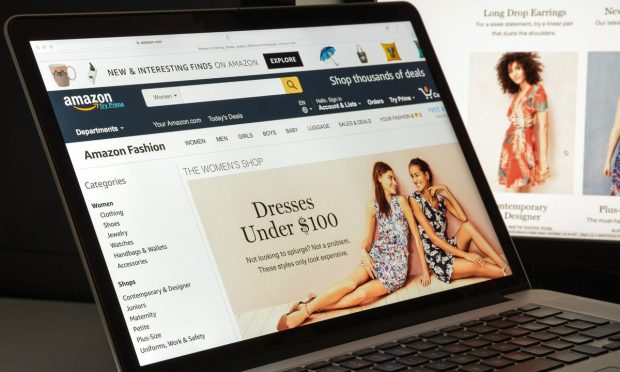Amazon’s Extreme Makeover Paying Off With Entire Ecosystem Embracing Fashion

When Amazon was trying to break into the fashion business five years ago, there were a lot of skeptics who doubted that the eCommerce giant could be seen as a place to buy a basic hoodie in the same cart as the season’s most trendy items.
Fast forward and Amazon still may not be the first place most people turn to when looking for the latest trends — but the eCommerce giant is making itself known. Articles from Elle, WhoWhatWear, Forbes and other outlets alert customers to the best items available from Amazon’s fashion and luxury marketplaces; and last week, Amazon unveiled its third annual celebrity-studded fashion show with Rihanna’s Savage X Fenty lingerie brand.
The fashion show, opened by renowned model Cindy Crawford and featuring a cast of models and performers that includes Ricky Martin, Gigi Hadid and Troye Sivan, is available available to watch exclusively on Prime Video. While watching the fashion show, viewers can buy goods directly from links in the video, part of Amazon’s experimentation with “tCommerce” as it rolls out its own branded TVs.
See: Amazon Aims To Enable Purchases From TV Screens Via ‘tCommerce’
According to PYMNTS proprietary data, Amazon had a nearly 16% share of the overall clothing and apparel market in 2020, up from 9.5% in 2019 and just over 7% in 2018. Looking just at eCommerce, Amazon has a 45% share of clothing and apparel sales, up from about 41% in 2019.
To be sure, some of the growth likely comes from the accelerated adoption of eCommerce over the past 18 months, but Amazon has also made strategic moves over the last several years that positioned it to take advantage of consumers’ digital desires. In 2017, for example, the company launched Amazon Prime Wardrobe, a try-on service that allows customers to order shoes, clothing and accessories at no upfront charge; and last year, Amazon introduced a personal shopping service for men akin to Stitch Fix, an extension of a similar service aimed at women.
Read more: Amazon Debuts Men’s Shopping Service For $4.99 A Month
Looking Luxurious
This month also marks the one-year anniversary of Amazon Luxury Stores’ launch, which allows designers to sell items as a “store within a store” experience, with each brand independently choosing inventory, selection and pricing.
Though initially launched as an invite-only experience, Amazon earlier this year opened the doors to all consumers and has quickly been adding new labels, including Chufy, Mira Mikati and Pietro Simone beauty products. Customers also have access to a reserved customer service hotline, and each luxury brand has certain items exclusive to Amazon Luxury Stores.
Read also: Amazon Upgrades Luxury Marketplace With Glossy Ads Aimed At Designers, Customers
In a recent tracker, PYMNTS found that online luxury purchase grew 39% worldwide in both April and May of 2020, with online retail sales anticipated to account for 25% of total luxury purchases by 2025. In 2019, online sales accounted for a 10% share.
Out Ahead of Walmart
As Amazon’s apparel efforts have borne fruit, its retail rival Walmart has not seen the same good fortune. The box store giant has seen a 4 percentage point increase in its share of the clothing and apparel market since 2016, though that’s less than half of Amazon’s 11-plus percentage point rise.

Walmart is showing signs that it wants to get more stylish, though. In March, the retailer hired designer Brandon Maxwell to serve as the creative director for two of its in-house private-label brands, overseeing four seasonal collections each year. And over the summer, Walmart inked a deal to bring the Justice brand of kids’ clothing and accessories to about half of its U.S. stores and website.